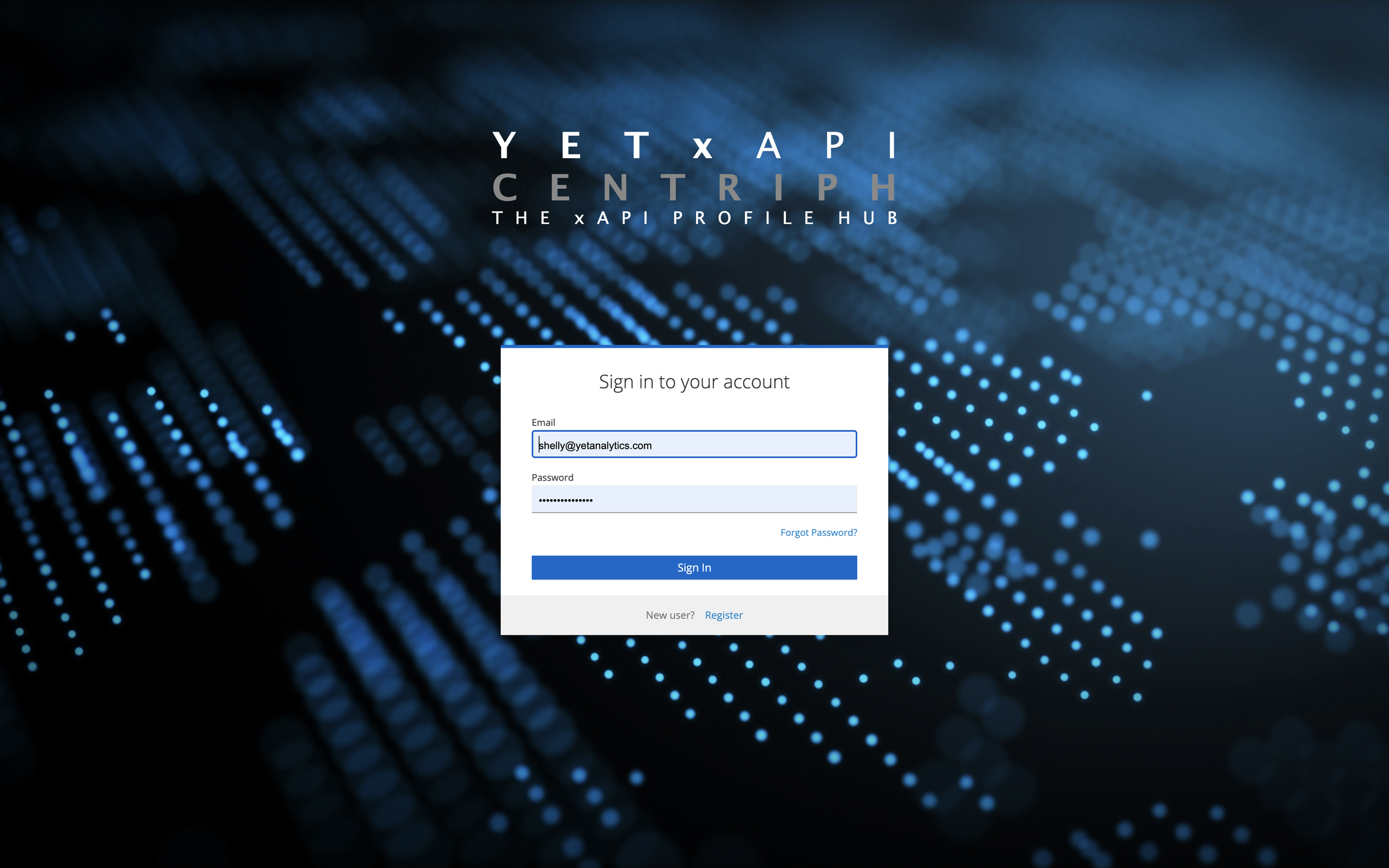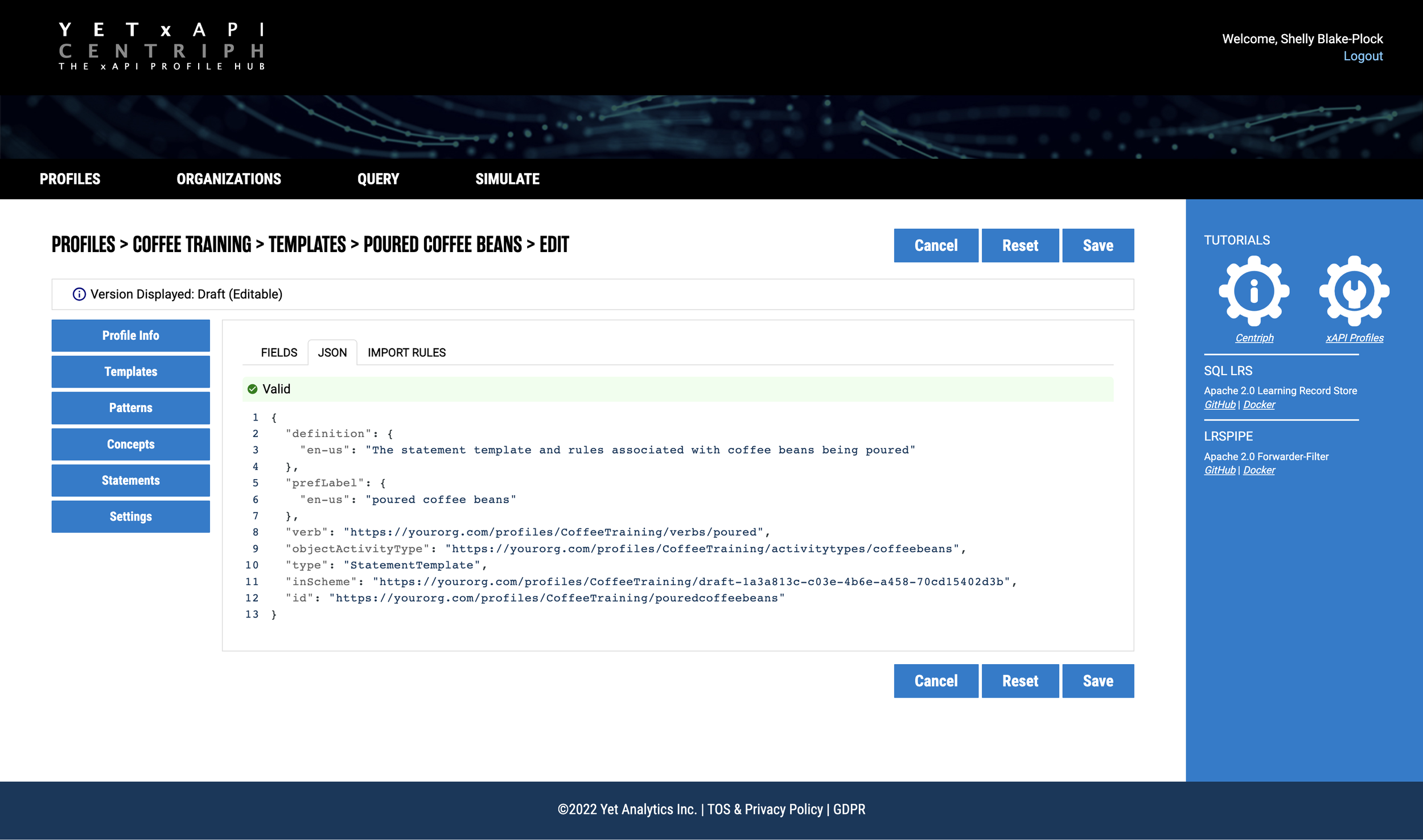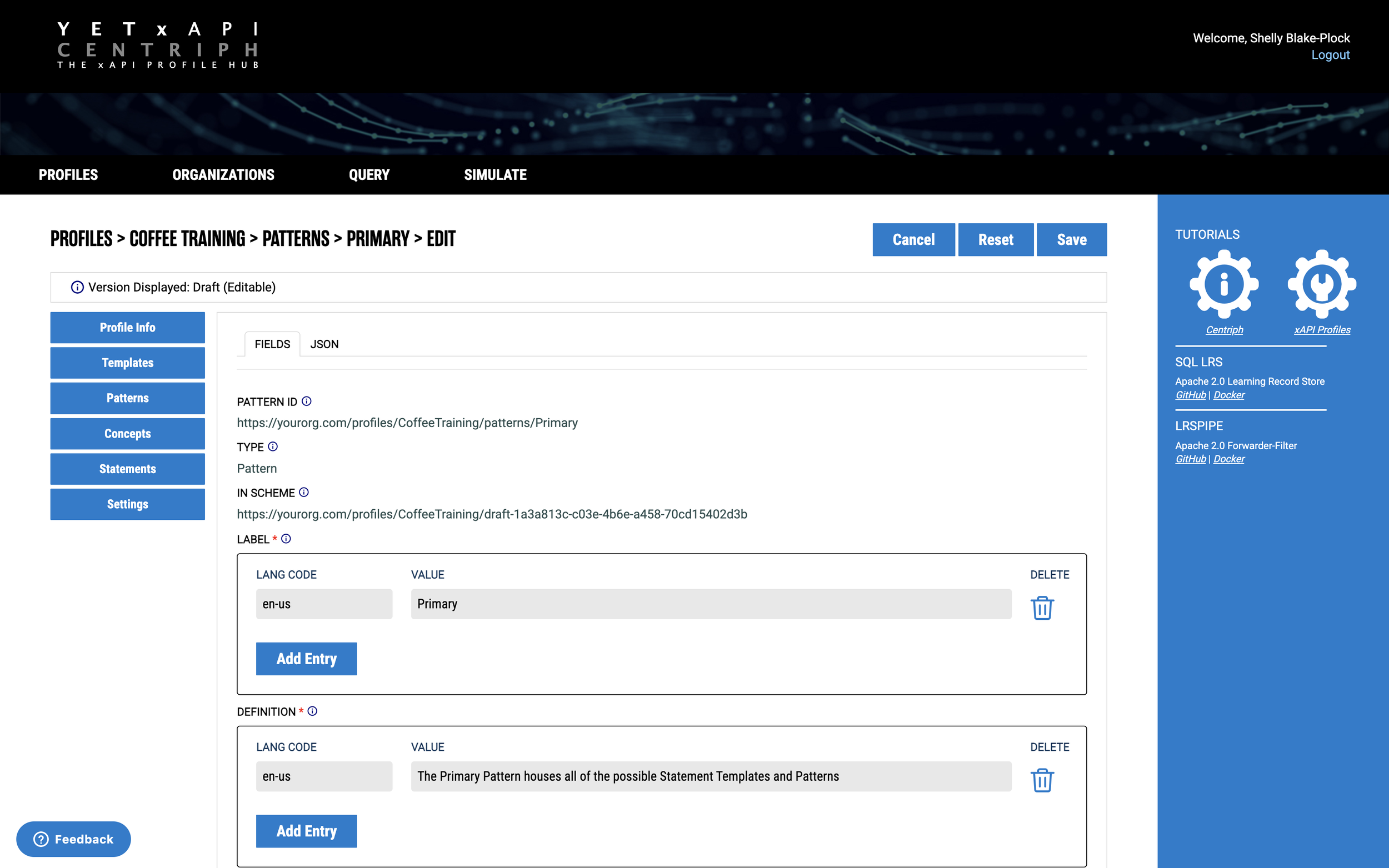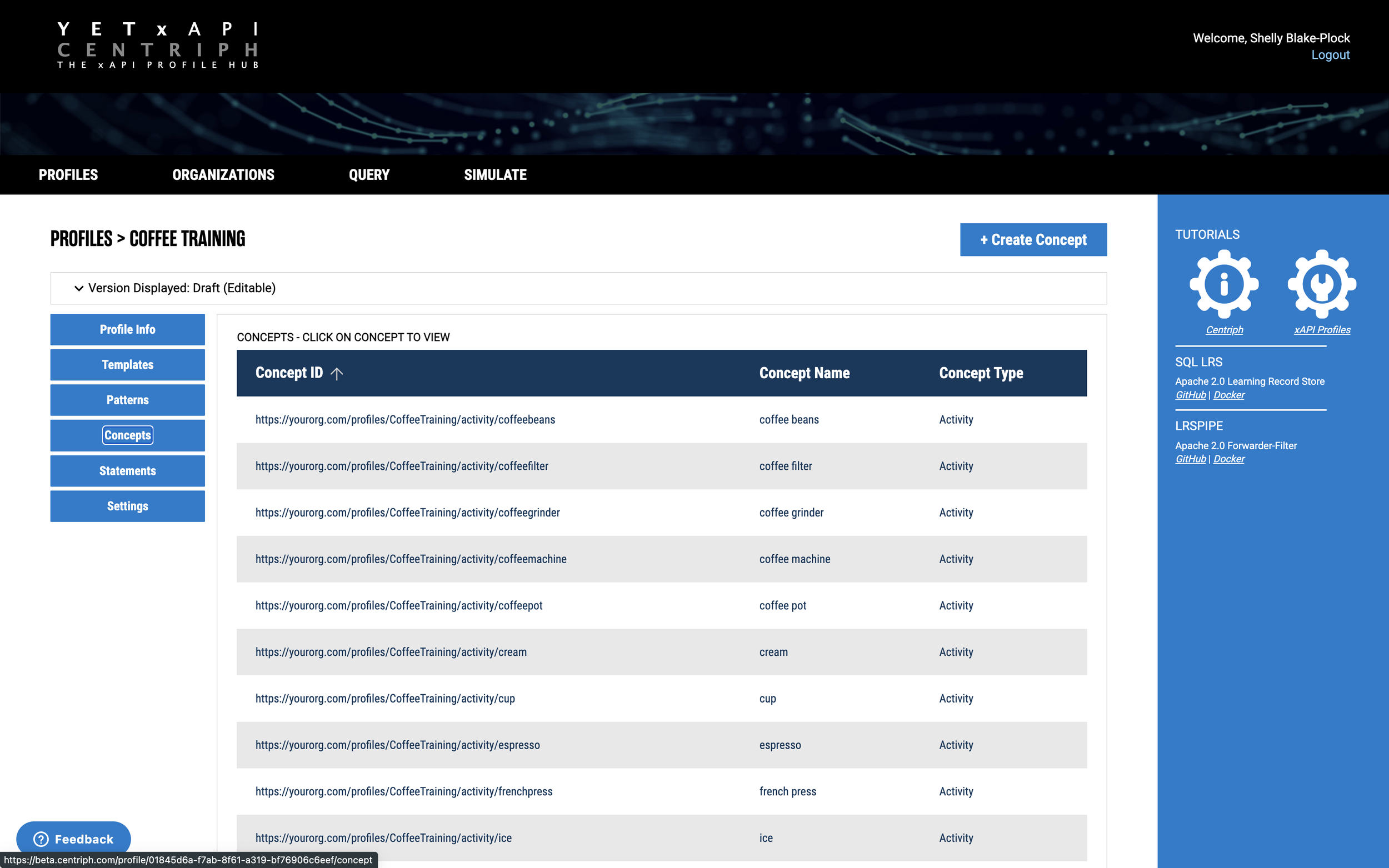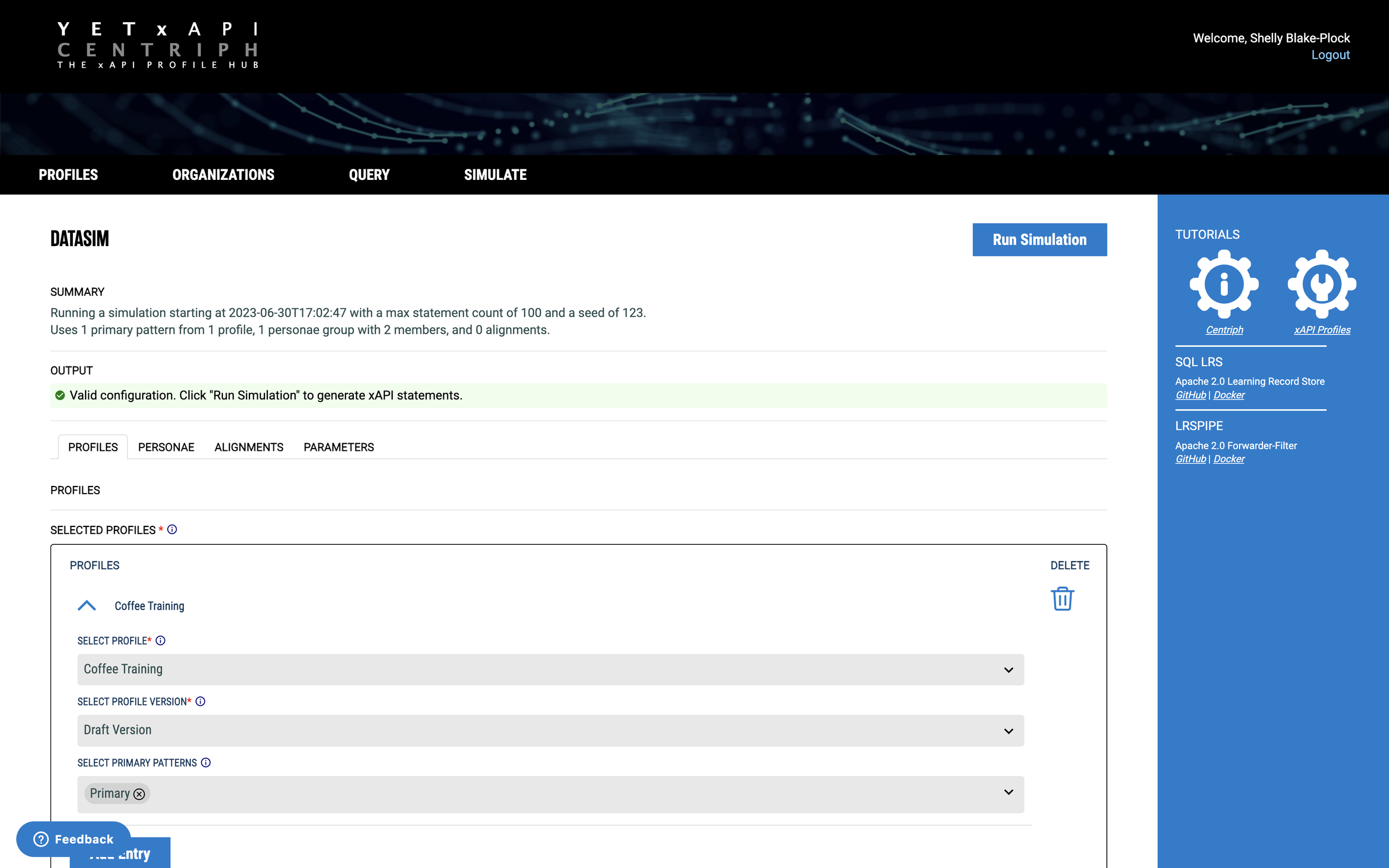Centriph, the Authoring Platform for xAPI Profiles: the Beta is now open to the public
For the last few years, we’ve gotten a steady stream of calls asking us to design xAPI Profiles for business needs.
These have included profiles to track observational assessments, enhance the data delivery capabilities of AI-enabled tutors, and model the relationships between learning experiences and business process models. We’ve written xAPI Profiles across industries — including in healthcare, defense, higher education, and publishing. We’ve developed profiles that track data from LMSs and LXPs, intelligent tutors and adaptive instructional systems, and extended reality platforms including VR and AR.
Eventually, we thought to ourselves — what if we just gave people the power to author xAPI Profiles themselves?
Enter the new authoring platform: Centriph.
Designed specifically for the authoring of valid and conformant xAPI Profiles, Centriph features guided xAPI Profile design, live real-time error messaging and data validation, and the ability to store and host your profiles. You can work on profiles by yourself or with a team.
We’ve been in closed beta for several months and have been testing and working out the initial bugs. We’re now expanding the beta to the public. Here’s the plan.
From now until at least the end of the year, anyone may create an account and design xAPI Profiles on Centriph. These profiles are private while in draft form and will only be shared with team members with permissions. HOWEVER, once published, they will go public to the whole Centriph community. When we move out of the beta, we’ll release the option to purchase private accounts for private published xAPI Profiles.
Note that user accounts will belong to one or more Organizations in the system. You can even create your own Organization. So, let’s say you work at a non-profit. When you set up an account, you can also create an Organization on behalf of that non-profit and invite others to join and collaborate on xAPI Profiles. This way, the org will never lose access to the profiles due to an employee or profile author leaving the org. If you are working for yourself or just experimenting, this can even just be “My Company” — just remember that in the logic of Centriph, it is the org not an individual which is actually doing the authoring.
All that said, here’s what we think is especially great for the community-at-large: accounts that choose to exclusively produce public xAPI Profiles will always have free access to the platform. You will only pay if your org chooses to open private repos.
So, what can you do with Centriph? Well, let’s start with taking a look at exactly what xAPI Profiles are. In the slidedeck below, we’ve created a presentation that will walk you through every step of what an xAPI Profile is while teaching you how to design your own. Take a look.
When you login to Centriph, you’ll immediately be able to start developing a profile either by using the guided UI, directly writing JSON, or importing a profile you already have handy. You’ll find a guide to using Centriph in the sidebar.
xAPI Profiles are broken down into Patterns and Concepts. Centriph is designed to let you work on each part independently. And it’ll check your work while you are designing. In fact, Centriph will not let you publish a non-conformant xAPI Profile.
Once you are happy with your new xAPI Profile, you can run a simulation so that you can take a look at what the data produced according to your profile will look like.
We’re excited to see what you create with Centriph. Register for your account at: beta.centriph.com and be sure to share on social media and with your colleagues. Oh, and if your organization is interested in using Centriph as its data authoring platform for xAPI Profiles, but can’t use a 3rd party SaaS platform… well, that’s not a problem. We can deploy an enterprise version of Centriph directly on your organization’s infrastructure. Just reach out and let’s discuss.


